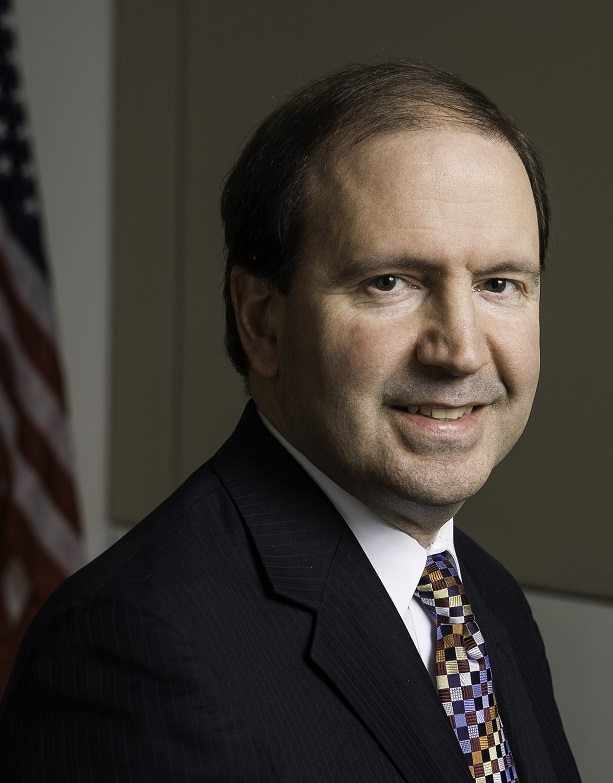
John Edgar is chief IT strategist at Salient CRGT and former vice president of IT for the U.S. Postal Service
The Modernizing Government Technology Act is finally rolling out. Agencies will now be able to control their own destiny — transforming their legacy, mission critical systems up to current standards, and meeting the end -user expectations and cybersecurity protections needed in today’s digital world.
With the recent release of the Office of Management and Budget’s Implementation of the Modernizing Government Technology Act, agencies can take advantage of new funding options; the Central Technology Fund and their own Working Capital Funds. For the central fund, agencies will submit proposed projects to be evaluated by the Technology Management Board.
Agencies can immediately establish working capital funds to support their IT modernization and technology transformation programs; improving cyber defenses, migrating to the cloud and adopting governmentwide shared services. In short, agencies can either borrow from the central fund and repay later or repurpose their own savings to jump start their modernization programs and improve business processes and deliver better outcomes.
The newly established funding flexibility enables agencies to build upon the transformative actions they have already been taking, such as:
- Adoption of agile development and DevOps tools and practices has increased the speed of delivery of new applications and enhancements at agencies such as the U.S. Citizenship and Immigration Services and the Patent and Trademark Office.
- Advanced analytics solutions provide higher value use of an agency’s information in delivering new and more efficient IT services, like reducing fraud at the Social Security Administration.
- Adoption of cloud solutions, both for commodity services such as email, as well as for specialized hosting and shared services are reducing the capital investment requirements of the involved agencies, such as at the Federal Communications Commission.
- Modern, mobile applications from the Transportation Security Administration and Amtrak enable a more efficient travel experience.
These are but a few examples of where government IT modernization efforts are delivering improved services and experiences to citizens. But there is much to do. Many of these new technologies and practices are beginning to bear fruit, but need to be reinvigorated and expanded with the addition of modernization funds.
All or Nothing Mindset?
Federal agencies commonly modernize legacy systems through methods like rehosting, refactoring, rewriting and replacing to deliver reduced costs and enhanced mission value. These approaches create savings available for reinvestment through the working capital funds. However, a caution is due — there is still something of an “all or nothing” mindset to many IT modernization efforts.
For an example, it isn’t necessary to “eat the elephant whole” and replace the entire system at once to modernize. There are new technical solutions that can isolate or encapsulate critical legacy components and data through implementation of API and web service.
Historical, curated or verified data can also be left in place and accessed through these APIs, avoiding the need for a potentially complex and expensive full migration to launch new mission services. Replacing the isolated system components can be done secondarily, while the enhanced mission value is still being obtained, like road crews building the detour to keep traffic moving while the main road is being repaired.
These approaches allow for modernized system modules or functions to deliver incremental cost savings to the agency’s strategy without waiting for a full replacement.
Focus on Speed to Value
Preparing to respond to the MGT submittals is the right time for federal agencies to assess the systems with the most mission benefit to modernize by prioritizing the greatest value that can be delivered soonest. That benefit may be in the form of business process updates, security or vulnerability mitigation, outdated technology replacement or another agency reasons.
However, the mission value assessment should be sure to identify incremental opportunities to achieve improved customer experience, cost savings, or operational efficiencies. Taking an agile, iterative approach to implementing the needed changes can minimize risk, improve user experience and more rapidly generate the savings needed to bankroll the working capital funds.
Riding the Wave of Change
The MGT working capital funds provide chief information officers and other technology leaders across the agencies with the financial tools to accelerate legacy system modernization. Today’s outdated, yet mission critical, systems will more rapidly migrate to the cloud, bring needed cybersecurity protections and foster positive experiences for their users. CIOs can now leverage creative and efficient solutions to capture savings and reinvest in their own initiatives — using the savings to create the tidal wave of change to successfully deliver modern, customer-friendly services expected by users to today’s digital world.

